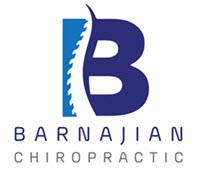Healthy Back Tips
Even after you have experienced the benefits of chiropractic care, it is important for you to continue practicing safe and healthy habits so that you can stay on the move—whether lifting, working, playing, or simply doing routine daily activities. Maintaining a healthy spine is vital to your health and well-being. We can help relieve discomfort and pain so you may experience better health. However, regular use of a self-care program by you, the patient, may prove to be one of the best approaches to keeping your spine healthy and free of pain and discomfort.
The spine has a unique anatomical design, providing flexibility, balance, structural support, and a protective conduit for the spinal column and nerves carrying messages between your brain and the rest of your body. With a healthy spine, you can reach, stretch, bend and twist without much thought or pain.
Even if you have chronic spinal problems, or underlying conditions such as arthritis, osteoporosis, or disc injuries, you can perform activities more easily by practicing basic self-care measures as outlined in this brochure and instructed by your Doctor. With proper care and a consistent exercise program, you can experience improved spinal function and range of motion in your daily life.
What can you do?
When you initially visited us, a chiropractic evaluation was performed to locate the source of your pain and diagnose your condition. A set of x-rays may also have been taken to view the area of your complaint as well. Chiropractic manipulations or “adjustments” may have followed to realign your muscles, bones and joints to correct misalignments, or “subluxations.” These adjustments may have diminished the pain, or may have cured your problem completely. In either case, it is important that you continue to actively participate in a self-care program which includes proper body mechanics, spinal self-care, and specific exercises to strengthen the surrounding muscles and increase range of movement and flexibility.
These simple tips can lead you on your way to taking better care of your spine.
Sleeping
Sleeping on a soft bed or couch can strain neck and back muscles since the three curves of the spine are not adequately supported. Sleeping on your stomach is not recommended since it can cause additional strain on the neck and back. Make sure you have a firm mattress that keeps the spine aligned and supports the spinal curvatures. The best sleeping positions are on your back or side. A pillow can be placed under the knees when lying on your back to take pressure off of the lower back.
Standing and Walking
Standing or bending forward for long periods can cause increased spinal pressure— especially if you slouch. Bending over with straight legs increases the pressure in the lower back. High-heeled shoes may result in a “swayback,” which throws the natural curves out of alignment when standing or walking. When standing for extended periods, rest one foot on a small stool to maintain spinal curvature and relieve pressure. The knees should be bent when bending forward. Low-heeled shoes may help by maintaining spinal curvatures and cushioning your weight.
Sitting
Sitting in chairs that do not support your back may throw the natural spinal curvatures out of alignment and add extra stress to the neck and back. Slouching while sitting increases the strain even more. Sitting too far away from the steering wheel while driving also may increase stress to the neck and back.Use chairs that promote good posture and support your back. Rolling up a towel or placing a lumbar or low back support cushion in the lower portion of your back may help to support your lumbar curve. Reposition the seat of your car so that your knees are level with your hips.
Bending and Lifting
Bending forward with the legs straight causes a loss of the three natural spinal curves and puts undue stress on the lower portion of your back. Lifting and bending forward at the same time puts great strain on the muscles and increases the pressure inside the discs (the spongy materials between the bones of your spine) even more. When bending forward, keep your back straight while bending at the knees and hips. This will help to keep the three spinal curvatures in proper alignment. When lifting, keep your spine straight while using your legs to do the brunt of the work. Hold the objects being lifted close to your body to keep the weight on your spine to a minimum.
Turning
Keeping the feet, knees and hips stationary while turning the lower back increases the chances of a twisting injury to the spine or an injury to the discs. The shape of the vertebrae do not allow the joints of the spine to twist easily. Imagine your body as being one continuous unit from your shoulders to your hips. When turning, use your feet to make the turns, not your back. Concentrate on moving your feet first in the direction you wish to turn, while maintaining the natural curves in your spine.
Reaching
Do not stretch your arms or back for something beyond your normal reach. This type of movement decreases the natural curves of the spine, resulting in additional stress or strain. Move your body close to the item you are reaching for. A ladder or stool may be used to reach items above your head. A tool called a “reacher” can be used to grab hard-to-reach items. Always ask someone for help if the item is heavy or you don’t feel you can reach it yourself.
